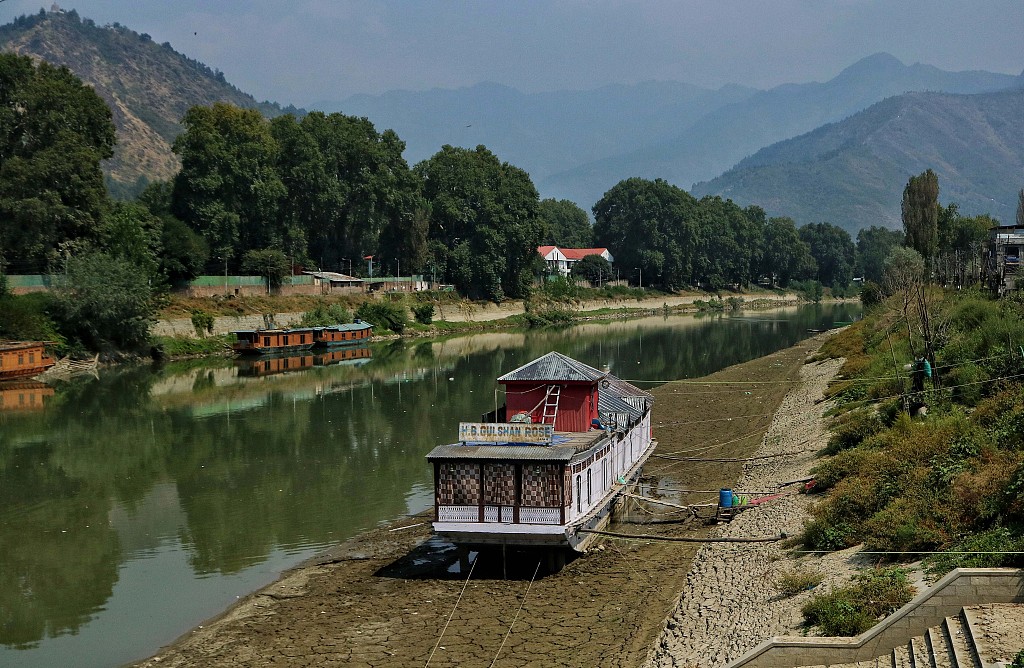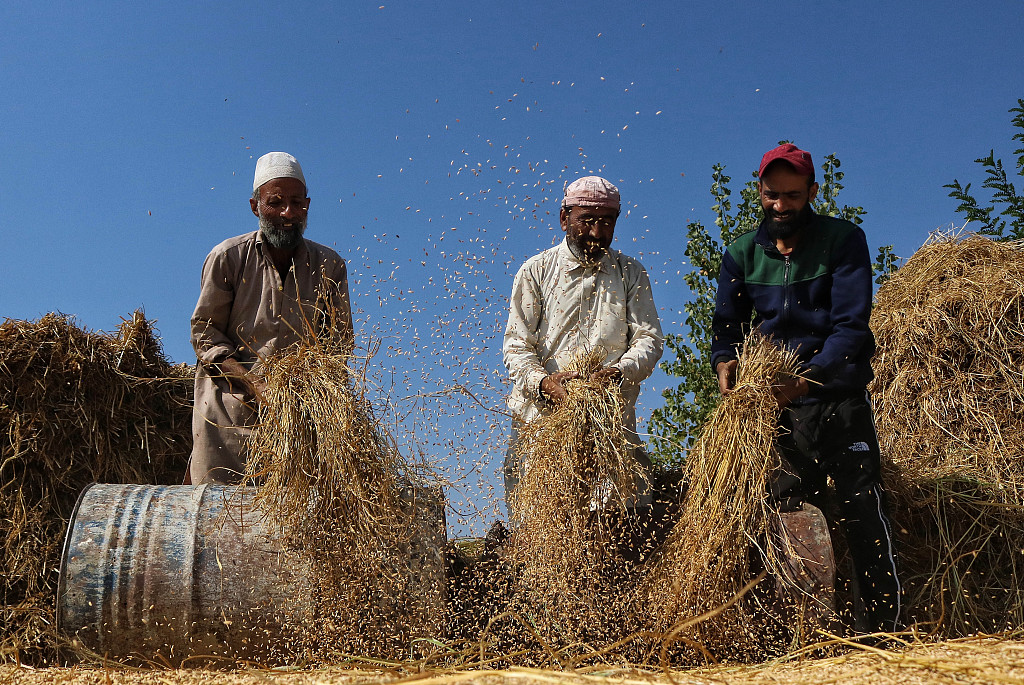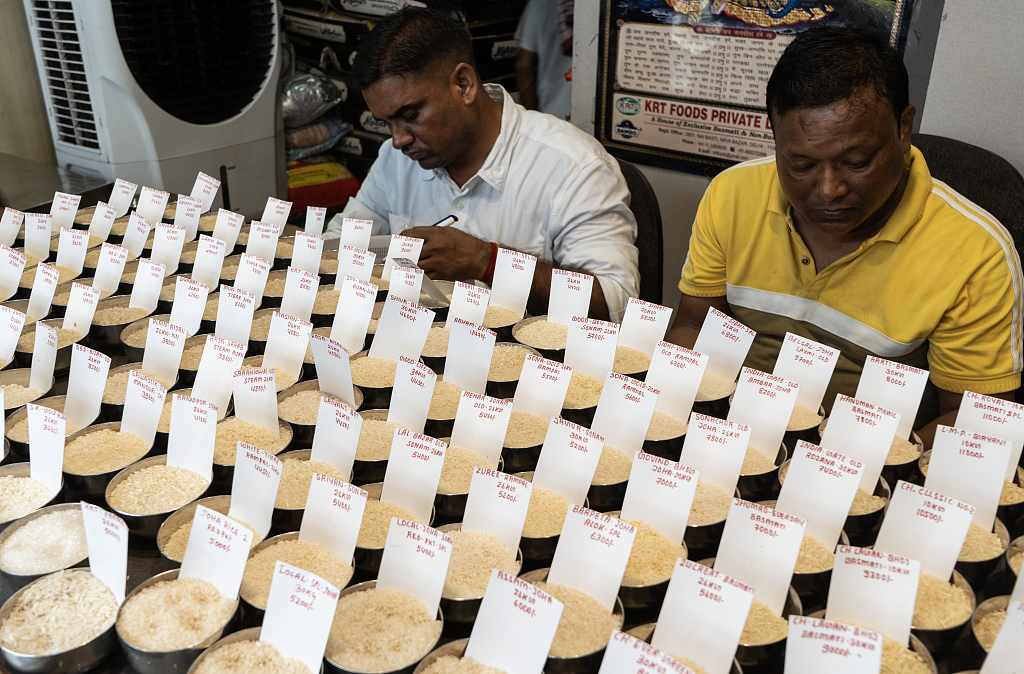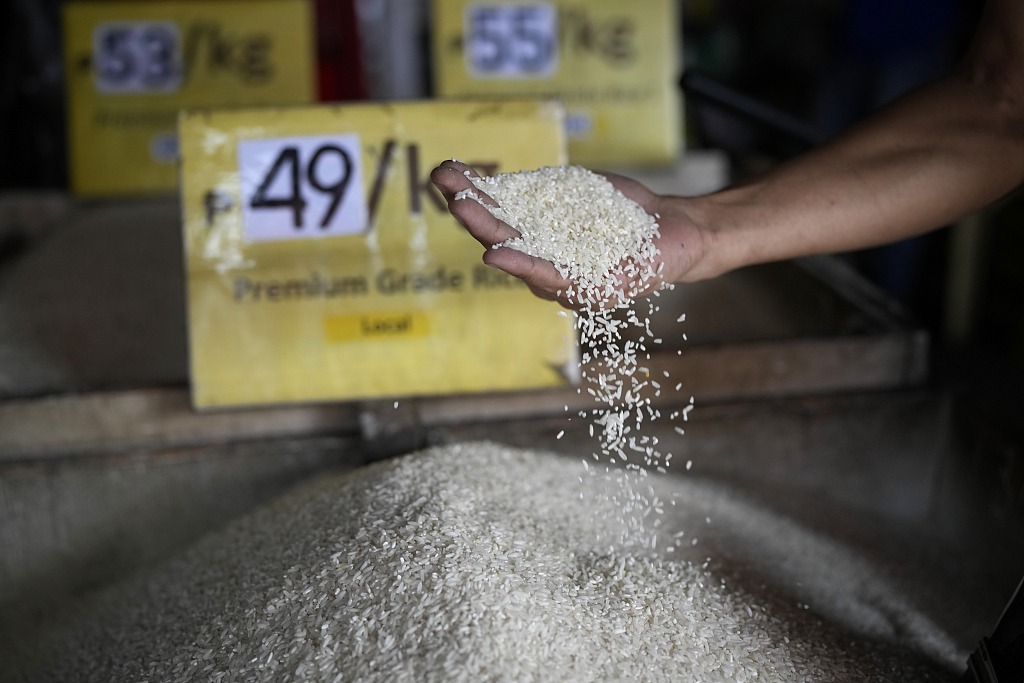A dryer monsoon season has been jeopardizing agricultural yields in India, a major exporter in the world market of a range of commodities including rice, sugar and onions.
India had an unusually dry summer this year.
This August has been declared by the Indian government the driest August since 1901, as the country received 36 percent less rainfall than normal, according to data compiled by the India Meteorological Department (IMD).

Water levels continue to recede in River Jhelum due to a dry spell in Srinagar, India on September 12, 2023. /CFP
Water levels continue to recede in River Jhelum due to a dry spell in Srinagar, India on September 12, 2023. /CFP
Although rainfall picked up in September, the total monsoon rains were 94 percent of its long period average, the lowest since 2018, the IMD said in a statement.
The monsoon, which runs from June to September and is vital for India's $3 trillion economy, brings nearly 70 percent of the rain the country needs to water crops and replenish reservoirs and aquifers.
This year, nearly half of the farmland in India lacked irrigation, making the monsoon rains even more vital for agricultural production.

Kashmiri farmers thrash paddy plants to obtain rice grains in a paddy field during harvesting season on the outskirts of Srinagar, India on September 28, 2023. /CFP
Kashmiri farmers thrash paddy plants to obtain rice grains in a paddy field during harvesting season on the outskirts of Srinagar, India on September 28, 2023. /CFP
According to Reuters, India's summer rainfall deficit could make staples such as sugar, pulses, rice and vegetables more expensive. Lower production could also prompt India to impose more curbs on exports of these commodities.
In July, India, the world's largest rice exporter contributing to about 40 percent of total global rice exports, banned the export of non-basmati white rice, a key variety in the global rice trade to calm rising domestic prices and ensure food security.

Rice dealers display samples in a wholesale store in Assam State, India on August 2, 2023. /CFP
Rice dealers display samples in a wholesale store in Assam State, India on August 2, 2023. /CFP
The move was followed by a series of export bans and restrictions by either India or other countries that have seen crop production decreases due to extreme weather, including droughts and floods brought by the El Nino weather phenomenon.
Reports say that rounds of export-tightening measures triggered fears of global food inflation as more than three billion people worldwide rely on rice as a staple food.
Reuters reported in August that global rice prices rose by around 20 percent since India's ban.
The price hike has been hitting ordinary people in the country hard, especially the poorer communities. Some families are reported to have to cut their daily three meals to just one.
The ripple effect reached other countries, especially in Southeast Asia.
Thailand, Vietnam and Pakistan, the world's second, third and fourth biggest rice exporters, respectively, have said they are keen to boost sales since demand for their crops has been rising after India's ban.

A man checks rice at a store in Quezon city, Philippines, on August 14, 2023. Rice prices surged to their highest in almost 12 years in August after India's rice export ban, according to UN Food and Agriculture Organization. /CFP
A man checks rice at a store in Quezon city, Philippines, on August 14, 2023. Rice prices surged to their highest in almost 12 years in August after India's rice export ban, according to UN Food and Agriculture Organization. /CFP
South China Morning Posted reported on October 2, that Malaysia urged people not to hoard rice after recent panic buying in the country that led to empty shelves in supermarkets and grocery stores nationwide.
Malaysia, which imports about 38 percent of its rice, is also reported to have held talks with India last week on lifting export restrictions.
The lack of water for irrigation has also been stoking tensions among different regions of India over the usage of river water.
Thousands of farmers battling drought in India's southern state of Karnataka began a day-long strike on September 29, to protest the sharing of water from a river that also runs through the neighboring state of Tamil Nadu.
(With input from Reuters)
(Cover image: Kashmiri farmers carry lumps of hay to make hay bales at a paddy field during harvesting season in Pulwama district, south of Srinagar, India on October 2, 2023. /CFP)
(If you have specific expertise and want to contribute, or if you have a topic of interest that you'd like to share with us, please email us at nature@cgtn.com.)